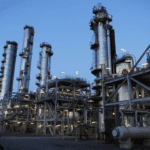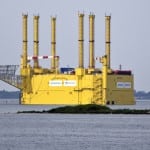Europe—and especially Germany—has been struggling with how best to integrate large amounts of renewable generation while maintaining grid stability. While considerable attention has been devoted to expanding national transmission systems, new links between those national grids are growing in importance. The biggest project so far took a step forward when, on March 19, the consortium behind the Nordlink high-voltage direct-current (HVDC) link between Germany and Norway awarded the construction contract to Swiss firm ABB.
The $2 billion, 525-kV transmission line will be, at 623 kilometers (km), the longest HVDC connection in Europe. It will transit the North Sea across the Skagerrak strait, from Wilster in Germany to Tonstad in Norway. When completed in 2019, it will be capable of sending 1.4 GW of electricity between the two countries—about 3% of German demand.
The Nordlink project, being led by grid operator TenneT and Norwegian system operator Statnett, is a key component in integrating the European Union electricity market. It will allow excess wind generation from Germany to be stored in Norway’s vast pumped hydroelectric storage facilities, and for Norway’s excess hydro generation to be shipped south. This is seen as a vital element in further renewable integration in Europe.
ABB’s $900 million contract will see it supply the two 525-kV HVDC converter stations at either end of the link and a 525-kV mass-impregnated cable system in the German half of the project.
Nordlink will be the first direct power link between Germany and Norway, but it will join several other major HVDC links already in operation, including the 700-MW, 580-km NorNed link between Norway and the Netherlands that came online in 2008 and the 1-GW BritNed link between the Netherlands and the UK, commissioned in 2010.
A similar link between Norway and the UK is currently under consideration and would function much the same way in allowing storage of excess wind and solar power from the UK and import of Norwegian hydro generation.
—Thomas W. Overton, JD, associate editor










